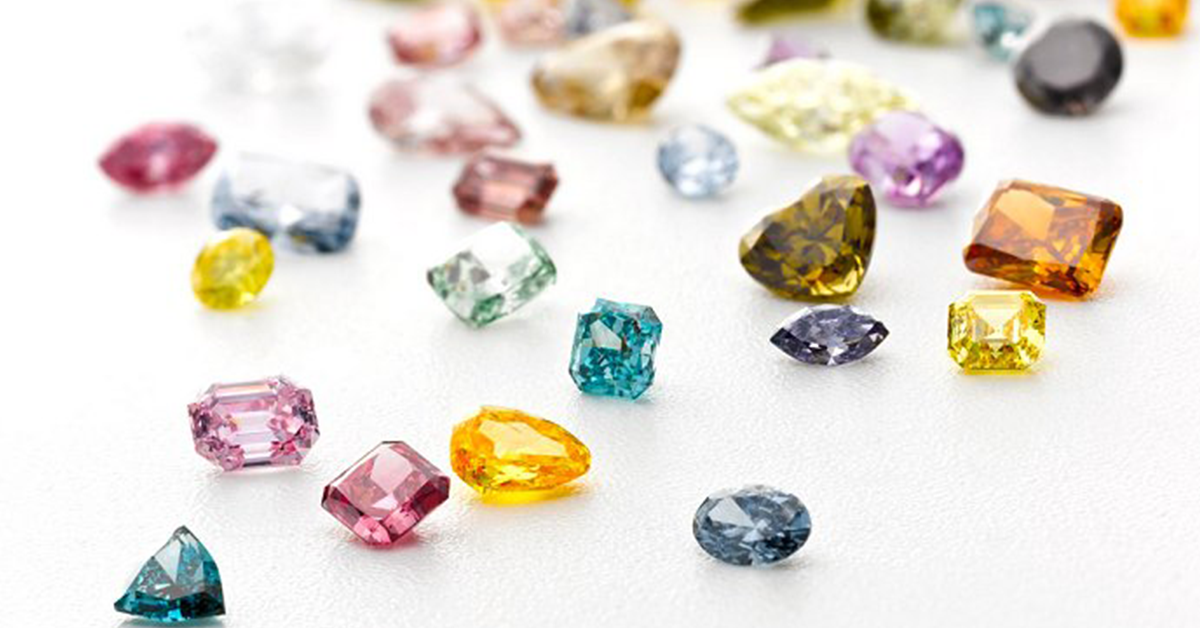Diamonds are (not) Forever
April 28, 2022
Despite the up and down of the economy, fine jewelry is selling – in fact most jewelers say many buyers are compensating for the loss of travel or just simply treating themselves. The market for luxury fine jewelry has been vastly growing, with year-end 2021 U.S. jewelry retail sales up 51% at $95.2 billion.
Did you know?
- • 75% of retailers and 92% of manufacturers reported that the precious colored gemstone jewelry category is a higher margin category than diamond jewelry.*
- • 40% of younger consumers (23-40) chose sapphire as their favorite gemstone closely followed by ruby and emerald with half of this group already having purchased sapphire jewelry.*
- • Pearl jewelry is particularly strong among the millennial 25-to-35-year-old demographic.*
- • Specifically, 42% of millennials are very likely to request pearl jewelry, as compared with only 19% of 46-to-55 year olds.*
Natural fancy color diamonds are completely authentic in every way. The colors were developed within the stones through nature and over millions of years formed into the rough stones found in the mines throughout the world. Historically, gemstone mining was limited to only a few different countries, with Sri Lanka being the largest source for many precious stones. However, with new mines developed in other locations like Zambia and Ethiopia, colored precious gemstones have become a more affordable option for sellers to build their collections.
Now, let’s take a look at a few options for locking in jewelry insurance:
1. Basic Homeowners Insurance for Jewelry
A standard homeowners insurance policy covers jewelry, including losses in a fire, tornado, theft or vandalism; however, this policy may impose a limit of around $1,500. Now you can raise the home insurance coverage for your jewelry, but that still may not be enough to cover the loss of a $25,000 ring. Too many homeowners find out that their standard home insurance will not fully cover the loss of a high value item until its too late.
2. Insurance Floater for Jewelry
A floater, also known as a ‘personal articles floater’ can provide you with better jewelry insurance by supplementing your homeowners coverage. This type of coverage can cover jewelry that exceeds the coverage limits of your homeowners policy. A floater insurance policy has you itemize each piece and it covers those ‘accidental losses’ such as dropping your ring down the bathroom sink or leaving a watch in a hotel room.
3. Stand-alone Policy for Jewelry
A stand-alone jewelry insurance policy can be purchased from a company that specializes in insuring jewelry. A specialized jewelry policy may go beyond a floater by covering incidents that a traditional insurance policy might not cover, such as a chipped stone in a ring or a broken clasp on a necklace.
In many cases, annual coverage from a specialty insurer costs 1% to 2% of the jewelry’s value. This means a $5,000 engagement ring could be covered for $50 a year, and could have deductible options as zero, $100, $250 and $500. One advantage to a separate jewelry insurance policy is that claims stay off your home insurance record and therefore won’t affect your future home insurance rates.
Here are some helpful tips for Protecting your Jewelry
- • Keep copies of purchase receipts
- • Take pictures of your jewelry
- • Store valuable jewelry in a secure place, such as a safe deposit box, or at-home safe that’s bolted to the floor and out of sight.
- • It can also be a good idea to keep jewelry in different places in your home to make it harder for thieves to find and steal all of your pieces.
- • When you’re traveling, bring only those pieces of jewelry that you plan to wear. Or taking it a step further and traveling with costume jewelry that looks like pricier pieces, rather than with high-value items.
As your Trusted Advisors that is where our experience comes in. Should you have any questions on your personal insurance program please contact your Agent or Service Team. They are happy to talk about your current policy or answer any questions you may have. Contact Us
*Source: Chubb Insurance
